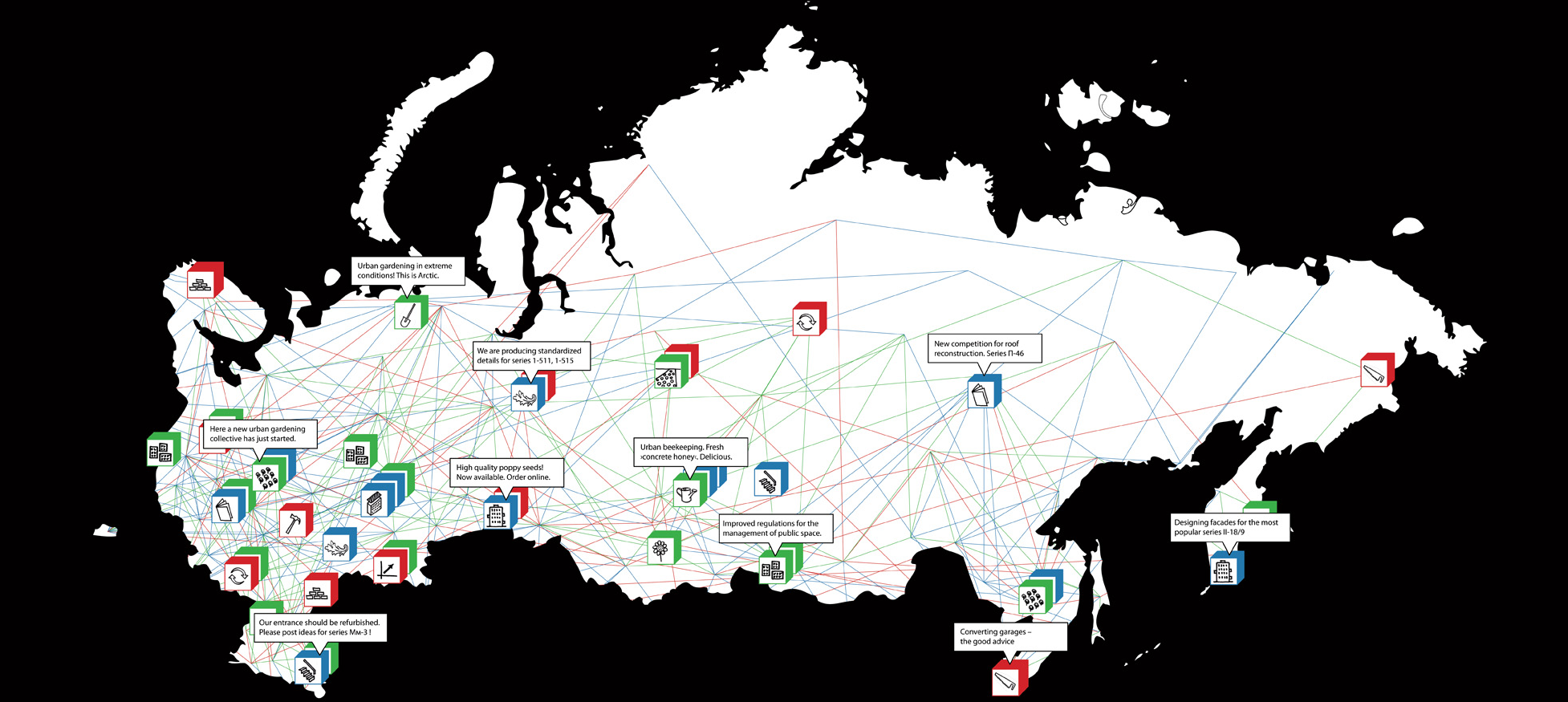New impulses after 10 years of urban change
This post is about urban creativity and the ongoing process to understand how people can be empowered to influence their environment to create enjoyable and interesting places to live.
10 years earlier (2011)
Together with Nataliya Sukhova (from transstruktura.com) I created a contribution for the competition “The Environment of Modern Architecture” at the State Museum of Architecture in Moscow. The work was published in the Tatlin News 2011.
Our concept looked like this:
The standardized ›mikrorayons‹ (city blocks) are dominating almost every Russian city. Their problems are also “standardized” – neglected houses and the monotony of the environment.
If the people would be enabled to take influence over their surroundings, they could create the kind of community that they want — a convenient and interesting place to live. This process of activism should be generated by specialists, providing residents with a set of “tools”. Architects and designers deliver the ideas and projects, politicians and city planers create motivations and rules. All this is unified in a central online platform that offers a project database and which is connected to social media networks.

By introducing these tools and transferring the management of public space from local authorities to community groups, we not only improve the living environment but reinvent the identity of the ›mikrorayon‹.
On blogs and forums interested people can share their own ideas and desires and therefore create a movement that is not driven by abstract ideas but by the needs of the people.
We have planned three action areas:
Urban gardening
- Reorganization of public space
- Division of public space into three categories: public space (municipality and residents), semi-public space (residents or organized groups of residents) and individual space (the single household, here the current trend of urban gardening finds support in the Russian Dacha tradition)
Project Database
- Standardized renovation projects
- Standardized renovation projects developed for specific buildings series
- Ready-made construction plans
- Ready authorities permissions
- Cost calculation
The good advice
- Self-organization, information exchange
- A platform, where neighbours can join the community to share their experiences, add their own projects and ideas or ask questions

Back in 2011, such grassroots initiatives were nothing new, but the concept seemed quite futuristic for Russia.
The big question this concept raises, of course, is how to create such a network. Where should the experts, managers and political will come from?
10 years later (2021)
In December 2021, I came across posts from the Urban Change Academy. An old Bauhaus colleague, Mathias Weber, is one of the founders of this platform, which aims to inspire, encourage and empower urban planners to shape urban change.

I joined the online-seminar “Urban Creativity Now! Best practices in the context of the post-Covid city”. In this seminar we discussed how the crisis has made many things possible that were previously unthinkable or difficult to imagine – parks became open-air fitness studios, car parks turned into playgrounds, exhibition halls changed into hospital wards. Many of these things have come about spontaneously, without any underlying strategies or development plans sometimes initiated by city administrations, sometimes by private initiatives. They demonstrate a creativity that we have not seen in cities for a long time.
A whiteboard exercise has shown that there is a particular need for empowering people. The creative ideas and motivation are there, they just need to be fostered through networks and unbureaucratic support.
Here we come full circle
Looking back at the big question we had in 2011 “How to create such a network. Where should the experts, managers and political will come from?” I realized that an initiative like the Urban Change Academy is exactely the answer. I was totally blown away by how urban planners, architects and other professions come together here (including a designer like me). The Academy already published a PDF filled with ideas for a post-corona city: Urban Creativity Now! The Playbook for the Post-Corona City (download the free PDF here). This is a collection of initiatives like we had in 2011, with the difference that these initiatives are no longer ideas, but have taken place in reality. They are reactions to a pandemic that we could never have imagined.
What next?
I'm very excited about all the possibilities and innovations that exist in this field! As I teach User Interface Design and design processes with the software Figma, I see the opportunity to co-create and collaborate ideas in real-time on the internet. With collaborative software and existing communication platforms, we have the chance to bring people together wherever they are. I am looking forward to help the Urban Change Academy and transstruktura to share knowledge, ideas and inspiration! Let us open a new chapter of urban change!


